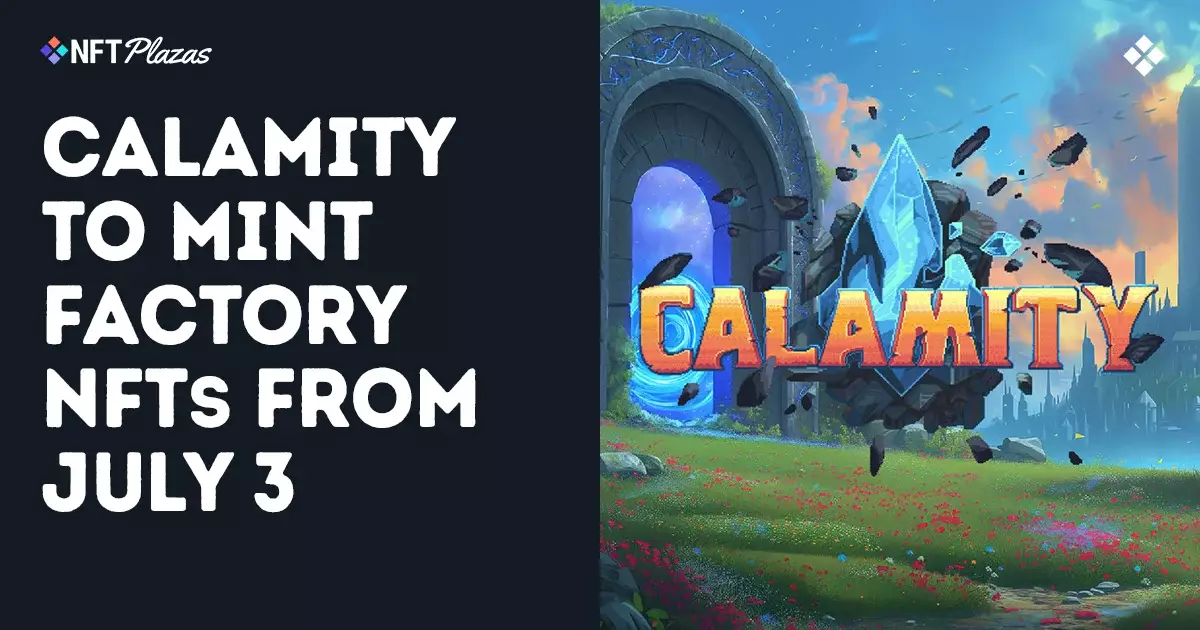The upcoming launch of Factory NFTs in Calamity, the blockchain MMORPG built on Ronin, is generating buzz that is hard to ignore. At first glance, these digital collectibles sound like a promising evolution in play-to-earn gaming, offering in-game land, unique mechanics, and staking opportunities linked to the new $WYRM token. Yet, beneath this polished marketing pitch lies a complex ecosystem that deserves more critical scrutiny. Factory NFTs are being positioned as essential for gaining a competitive edge—a “personal in-game space” that resembles customizable land that supposedly enhances gameplay and rewards. However, the question is whether these NFTs deliver genuine gameplay value or simply deepen the commodification of gaming through artificial scarcity and token speculation.
From Gameplay to Speculation: The Blurred Lines of Blockchain Gaming
Calamity follows the trend of many blockchain games, where tangible game mechanics entwine tightly with speculative asset ownership. The Factory NFTs are tiered collectibles offering staking rewards in $WYRM tokens with the promise of “performance-based” play-to-earn features in Season 1. While promising innovative mechanics like Expeditions and Automatas, this model hinges heavily on players purchasing NFTs upfront (with an initial price of $40) and then merging tiers to upgrade rewards. This “pay-to-progress” mechanism risks converting what should be skill- and strategy-driven gameplay into a form of financial investment. Players without capital risk falling behind, contradicting the inclusive spirit that true multiplayer gaming should celebrate.
The Invitation to a Financial Race, Dressed as Gaming
By tying in-game progression and power to NFT ownership and staking capacity, Calamity effectively institutionalizes economic barriers within its universe. The initial sale of 2,160 Factory NFTs at $40 each, payable in stablecoins via Ronin or Ethereum, makes it clear the developers expect players to come not just for entertainment, but also for the potential earnings from $WYRM tokens. The roadmap reveals an escalating cycle of buying and merging NFTs to reach Tier 5 factories for maximum returns, turning gameplay into a speculative ladder rather than a pure gaming experience. This commodification appeals more to traders and investors than traditional gamers focused on skill mastery and narrative engagement.
Blockchain Tools Added to a Traditional MMO Experience: Innovation or Complication?
Calamity’s core gameplay draws heavily from established RPG classics like Diablo, Lineage II, and Albion Online, offering vast dungeons and social systems. On paper, integrating NFT land and token staking introduces new layers of interaction and ownership. Yet, this technology risks complicating the game with opaque mechanics driven by crypto economics rather than design innovation. For many players, dealing with smart contracts, token volatility, and NFT trading marketplaces detracts from immersion—shifting attention away from storytelling and skill to financial strategizing, an unwelcome burden for those just seeking fun.
Questionable Utility and Real Player Benefit
The touted benefits tied to Factory NFTs include access to novel crafting, expeditions, and in-game land use—mechanics promising “real utility.” However, details on these mechanics and how they concretely enhance the experience remain scant. Many blockchain projects promise unique utilities that end up feeling tacked-on or superficial, primarily designed to boost NFT and token value rather than player enjoyment. Moreover, locking social or gameplay advantages behind paywalls runs counter to fair competitive principles in multiplayer environments, favoring wealthier users.
Center-Right Lens: Balancing Innovation with Market Discipline
From a center-right liberal perspective, blockchain gaming like Calamity presents both opportunity and risk. Innovation and private enterprise deserve support, but not at the expense of consumer protection and market transparency. Calamity’s model, with heavy reliance on upfront NFT purchases and token speculation, risks repeating the pitfalls of poorly regulated fintech schemes marketed to uninformed users. Responsible innovation demands clear communication about risks, realistic gaming value beyond mere speculation, and safeguards against creating elitist dynamics within player communities.
Final Thoughts: A Cautionary Tale for NFT Gaming Aspirants
Calamity’s Factory NFTs epitomize the growing pains of merging blockchain economics with interactive entertainment. Their promise of unique in-game land and token rewards is enticing but shrouded in financial mechanisms favoring early adopters and investors. Players looking for genuine gameplay and community engagement should approach such projects cautiously, wary of games that blur the line between fun and finance. Until there is greater evidence these NFTs deliver enduring entertainment value over market hype, Calamity exemplifies why crypto gaming remains a polarizing frontier—equal parts thrilling innovation and speculative gamble.
















Leave a Reply